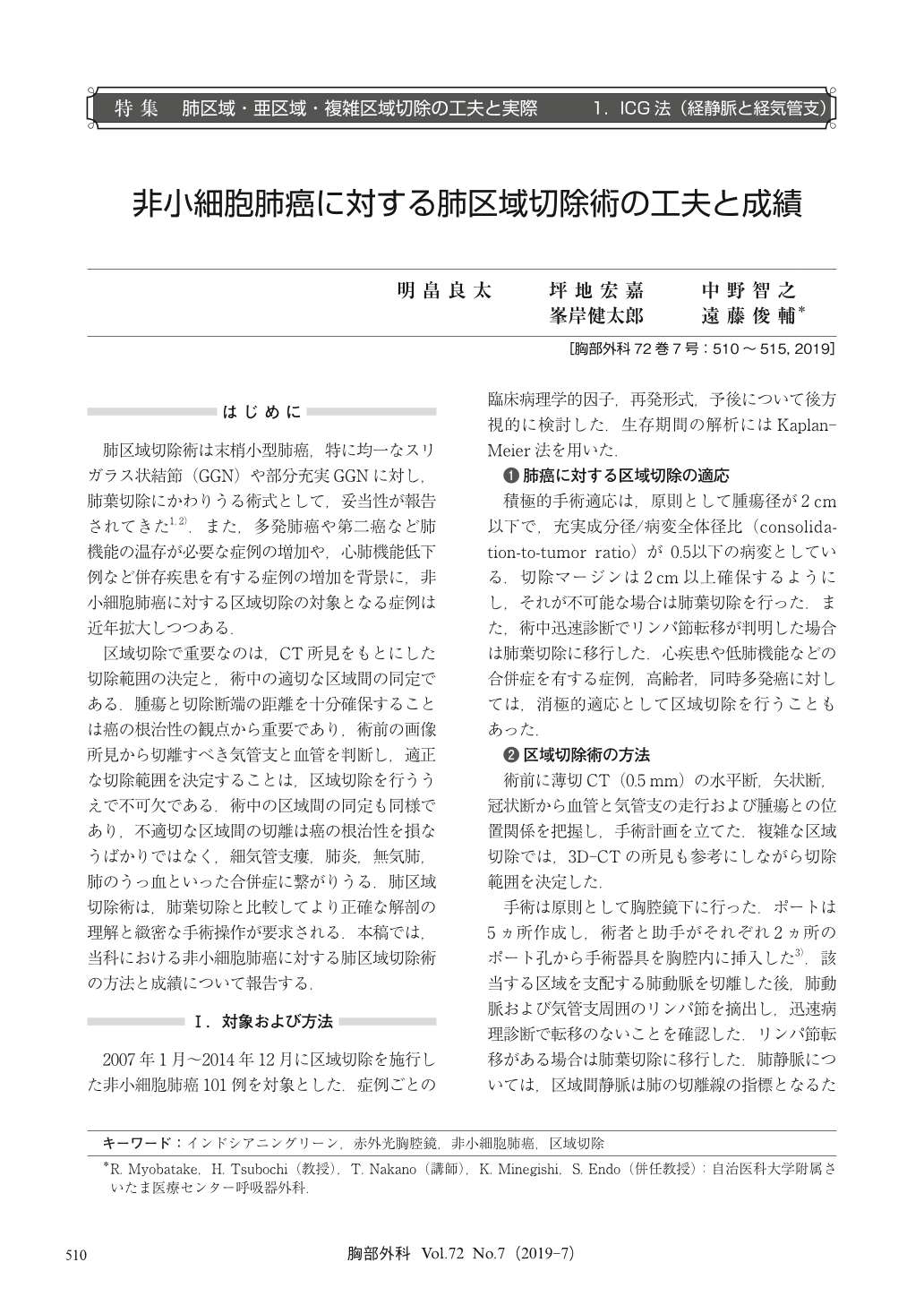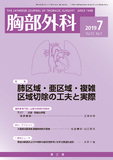Japanese
English
- 有料閲覧
- Abstract 文献概要
- 1ページ目 Look Inside
- 参考文献 Reference
肺区域切除術は末梢小型肺癌,特に均一なスリガラス状結節(GGN)や部分充実GGNに対し,肺葉切除にかわりうる術式として,妥当性が報告されてきた1,2).また,多発肺癌や第二癌など肺機能の温存が必要な症例の増加や,心肺機能低下例など併存疾患を有する症例の増加を背景に,非小細胞肺癌に対する区域切除の対象となる症例は近年拡大しつつある.
Background:The most important step in lung segmentectomy is to determine an appropriate intersegmental plane to obtain sufficient pre- and intraoperative margins. Inappropriate dissection of the lung parenchyma leads to loss of oncological validity and additionally causes various complications such as pneumonia, prolonged air leakage, lung congestion, and atelectasis.
Objectives:In this study, we evaluated the validity of segmentectomy for non-small cell lung cancer (NSCLC) based on evaluation of survival outcomes and recurrence patterns.
Operative technique:In principle, we usually perform video-assisted thoracic surgery segmentectomy. Hilar dissection is performed along the intersegmental vein under ultrasonographic guidance, and the peripheral lung parenchyma is subsequently stapled. We usually create inflation-deflation lines from before to determine the intersegmental lines. Recently, near-infrared fluorescence imaging with indocyanine green is also used.
Methods:We retrospectively reviewed data of 101 patients who underwent segmentectomy for lung cancer between 2007 and 2014.
Results:The 5- and 10-year overall survival rates were 84% and 62%, respectively. The 5- and 10-year recurrence-free survival rates were 83% and 63%, respectively. Recurrence at the surgical margin occurred in 5 patients (pulmonary stump:4 patients, bronchial stump:1 patient).
Conclusion:Segmentectomy may be acceptable for patients with Stage Ⅰ NSCLC. Accurate determination of the intersegmental plane is essential to avoid stump recurrence.

© Nankodo Co., Ltd., 2019


